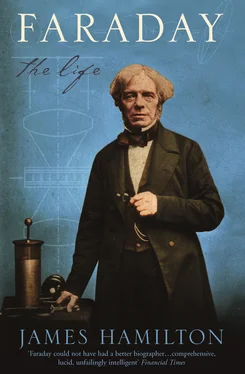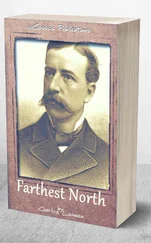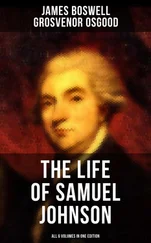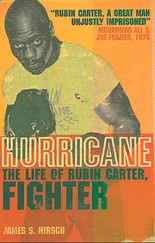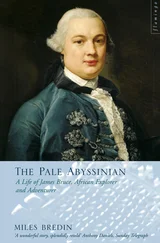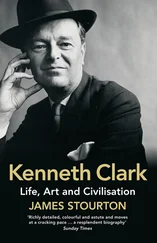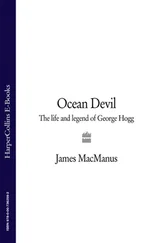Davy took out his travelling box of chemical equipment, and heated a few of the flakes. True to form they vaporised in a dramatic and quite beautiful but poisonous violet smoke. The men choked; someone ran to the window and flung it open. When the smoke had cleared, they took some more of the substance and heated it in a sealed jar. It did not need much heat to start to smoke, and very soon, as it cooled again, it condensed into purple crystals around the neck of the jar. They then dissolved some in alcohol, and formed a deep brown liquid which precipitated silver nitrate. Sir Humphry tipped a bit of this onto a sheet of paper and put it in the sun to dry, where it very quickly tarnished to a dirty black.
Then Sir Humphry tried some other tricks. He leant over his tubes and jars like a magician. He rubbed some of the mystery substance with zinc filings and found that a liquid formed. When it was put into a tube with potassium and heated it flared violently, and the men all backed off. It reacted even more violently when heated with phosphorus, and in combination with mercury a heavy metallic liquid formed which on heating became first orange, then black, then red. Faraday was taking notes of all this, as was his practice, and it is because of these notes, later transcribed into his Journal, that we know so much about this critical scientific meeting. In making the chemical combinations that Faraday described – and in a rented hotel room too – Davy was skimming the edges of extreme physical danger, not only from poisoning by the gas but from the effects of being showered by burning phosphorus or potassium or heated mercury. He was also risking expulsion from the hotel.
Over the next few days Davy made more experiments on the mysterious purple flakes. The visitors probably left him to it, but Faraday was present, as his notes, written out in the Journal under 1 December, make clear. There was much controversy in Paris over whether Davy should have been given a sample to work on alone – Thénard and Gay-Lussac were ‘extremely angry’ with Ampère for giving some to Davy, because Gay-Lussac was intending to publish an analysis of ‘Substance X’. 6
Davy repeated some of the experiments he had earlier tried in the presence of his visitors: bangs, whooshes, smoke and great stinks issued from the hotel room as he tried combining ‘X’ with iron, zinc, tin, potassium, ammonia. It was all done in tiny quantities, but the results were prodigious: ‘When solution of ammonia is poured on to the new substance and left in contact with it for a short time,’ Faraday recorded, ‘a black powder is formed which when separated, dried and heated, detonates with great force.’ 7
In carrying out all these tests, Davy was rapidly eliminating possibilities for the flaky substance, and approaching a definition. He was racing, in the short time he could spare, to find a solution to the puzzle, and above all to find it before Gay-Lussac or any other Frenchman did. Despite Gay-Lussac’s anger over the freedom Davy had been given to work on ‘Substance X’, Davy had a great respect for his rival. He described him as ‘quick, lively, ingenious, and profound, with great activity of mind, and great facility of manipulation. I should place him at the head of the living chemists of France.’ 8
This was undoubtedly a private battle of wits. Nicolas Clément moved into the fray when he gave a paper at the Institut showing that the substance could be produced by passing sulphuric acid through seaweed ash. But Gay-Lussac was the true rival, not least because Davy had unfinished business with him: three years earlier Gay-Lussac had allegedly suppressed the French publication of a paper on alkalis by Davy. 9Perhaps to size up the opposition, Davy and Faraday went to hear Gay-Lussac lecture on vapour to his students at the national school of chemistry in the École Polytechnique. ‘My knowledge of French,’ Faraday wrote later, ‘is so little I could hardly make out the lecture, and without the experiments I should have been entirely at a loss.’
After the lecture they were shown the enormous voltaic battery at the École, comprising six hundred pairs of plates, each seven or eight inches square, which at its best could produce six hundred volts. With some grim chagrin, Faraday noted that the battery had been paid for by the French government, while Davy had had to appeal to the patriotism of the Royal Institution Managers to raise money to buy one for England. He did not ask the government – there was not a hope of government money for scientific equipment in England until Charles Babbage drummed money out of the Exchequer for his Difference Engine in 1823.
Ten days after first being introduced to ‘X’, Davy went to the Jardin des Plantes, where Michel Eugène Chevreul had a laboratory, and the two scientists discussed and worked on the flaky substance together. Faraday was with them, taking notes. By 11 December Davy had concluded that it was an element standing alone, and he coined the name ‘iodine’, from the Greek for ‘violet-like’. On that day he did some final, conclusive tests, trying to pass a current through the material using Chevreul’s voltaic pile. He confirmed that it was an element, individual and apart, an analogue of chlorine, and thought it might come to be used to manufacture pigments, and in gunpowder. That was a fine triumph over French science, although as Faraday put it, with a trace of still lingering caution, ‘as yet it must be considered as a simple body’. 10
With characteristic speed, Davy wrote a paper on iodine, with Faraday’s help as secretary in transcribing his atrocious handwriting and crossings out, which he rushed to the Royal Society in London to be read to his peers. 11
While Davy was concluding his tests on iodine, Faraday was already expecting to leave Paris – he had written to his mother on 9 December saying as much. 12Sir Humphry had received his medal from the Institut, he had met fellow scientists, and he had clinched the iodine question. Nevertheless they stayed on for another three weeks, perhaps so that Davy could discuss iodine further and discover economic natural sources for it, less inherently dangerous than saltpetre. The Monday after Davy had reached his conclusions on iodine, Faraday records that he had at last seen the museum at the Jardin des Plantes; if he was accompanying Davy that day it suggests that Davy’s obsession with finding a source for iodine might have led him to pick over the exhibits in the museum and to discuss them with Cuvier, the Professor of Anatomy at the Jardin des Plantes. It is quite within Davy’s impulsive nature that he should change plans at a moment’s notice, and keep his entourage in uncertainty over what was to happen next. Davy had had many conversations with Cuvier. He had found the Frenchman eloquent in conversation, with ‘a great variety of information on scientific as well as popular subjects … the most distinguished man of talents I have known; but I doubt if he is entitled to the appellation of a man of genius’. 13
From Davy this was a great compliment. Davy too was loquacious, a formidable conversationalist, and, like Cuvier, he came by the end of his life to extend his thought and philosophy to the widest realms of human society and happiness. Davy, however, merely thought and wrote about social progress; Cuvier, as a politician and courtier as well as natural scientist most famous for his interpretations of fossil remains, actually tried to put it into practice. He became a minister after the restoration of the monarchy under Louis XVIII, and stood up to Charles X when he put an end to the freedom of the press in July 1830. Under King Louis-Philippe Cuvier became Minister of the Interior.
The day after Faraday had seen some fossils at the museum in the Jardin des Plantes, those ‘astonishing organic remains’ of mammoths and other mammals that Cuvier had discovered at Montmartre, he walked across the city up the hill to Montmartre to try to find where they had come from, and with luck perhaps to dig up some more. But try as he might, with hand signals, a smattering of French and perhaps some exasperated English, he could not make the plaster-burners in the quarry understand what it was he wanted to see. It could not have been easy to make an early-nineteenth-century French workman understand by hand signals what a fossil was. As a result, Faraday did not get to the cliff to poke about, but he did take a good look at the geology of the place and, remembering Davy’s teaching, noted that ‘The rock is limestone and selenite and is burned for plaster on the spot … This stone is very imperfectly crystallized and looks more like calcarious sandstone. It is nearly all soluble in acids.’ 14
Читать дальше
